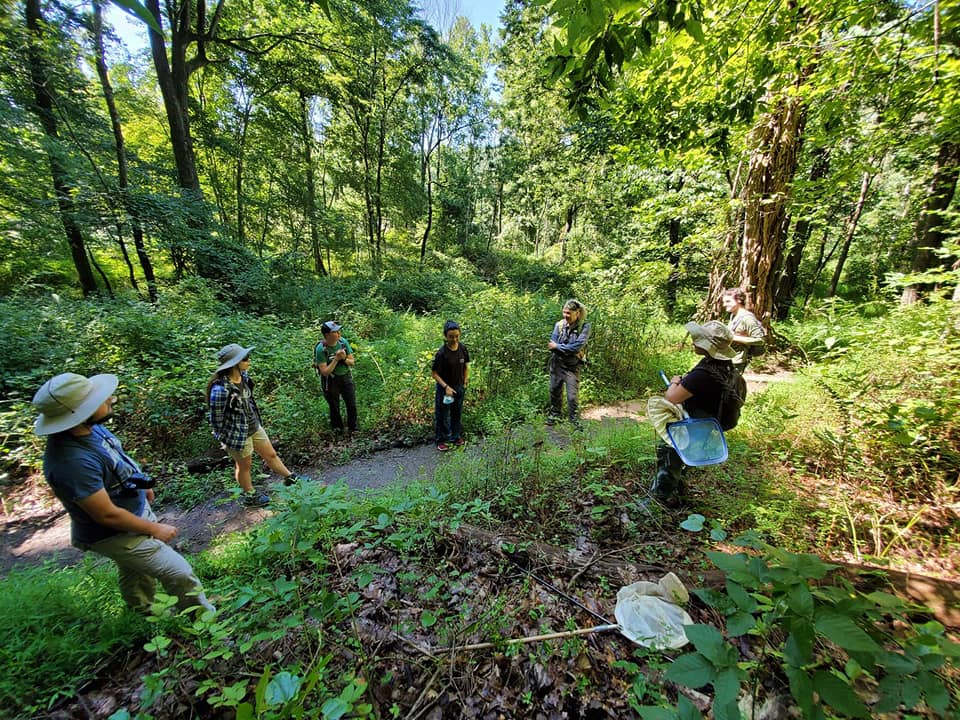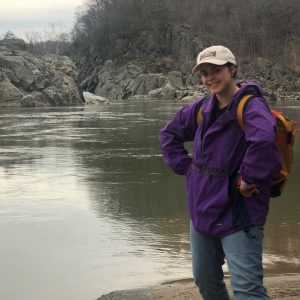Hello everyone!
This last month of my fellowship has been SUPER intensive with identifying all the specimens I collected during my field work, so I decided to compile a short “diary” of all the cool aspects of this project. Here you can read about me struggling with water skater identification, nerding out about dragonflies, and having an overall great time as I begin to wrap up this fellowship!
August 1st, 2020
It’s Saturday and I still cannot believe that I am done with trapping for the season! In the beginning I thought my 9-mile round trip trapping route would be the hardest part, but that was before I started familiarizing myself with the intricate and confusing world of water skaters. “Familiarizing” is a really strong word to use here folks… really strong because the online keys I found were limited to the Midwest and England. Working with ants has made me incredibly privileged in terms of species identification tools. Myrmecologists (people who specialize in studying ants) document everything, all the time, in any format. Subsequently, there is a lot of existing literature on identifying ants.
Gerridae (water skaters) on the other hand? Not a whole lot, so there has been some time taken to try and identify my specimens as a result.
August 5th, 2020
Well, I realized that the “nymphs” I have been identifying as common water skaters are actually in a whole different genus. Misidentification is a hazard when doing the level of analysis this project requires! Aquarius nymphs (common water skater) bear a striking resemblance to adults in the family Trepobates. Time to go through the roughly 1,000 water skaters I have in my data so far and re-evaluate.
Below are three photos of three different specimens to help illustrate this confusion (and just how difficult identification can be).



Some things I learned this week:
- Water skaters have hydrophobic legs, meaning they repel water, allowing them to seemingly walk on the water’s surface ( when their legs are dry, they are silvery!).
- If you inhale ethanol fumes for 8 hours straight in a closed room, you will get a headache – open your windows if you’re doing intensive insect identification!
August 11th, 2020
Running total of insects identified? Hundreds of my specimens from aquatic, sweep net, and pitfall traps.
Check out this STUNNING photo taken through a dissection scope displaying the difference between the labiums (insect mouthparts, or, the lower lips) of two different dragonfly species. On the left we have a gomphidae (clubtail) easily identifiable from their 4 segmented and clubbed antennae, and on the right a cordulegaster (spiketail) with 6 segmented antennae and a spoon shaped labium – bonus points for the curved labium and cool teeth!
This is a sneak peek at one of the photos included in my upcoming pictorial guide of the insects I have collected this summer. Every time I encounter a different species on the preserve, I document it with a photo, mark out identifying characteristics, and pop it into a word document! The final product is on its way and will be publicly accessible.
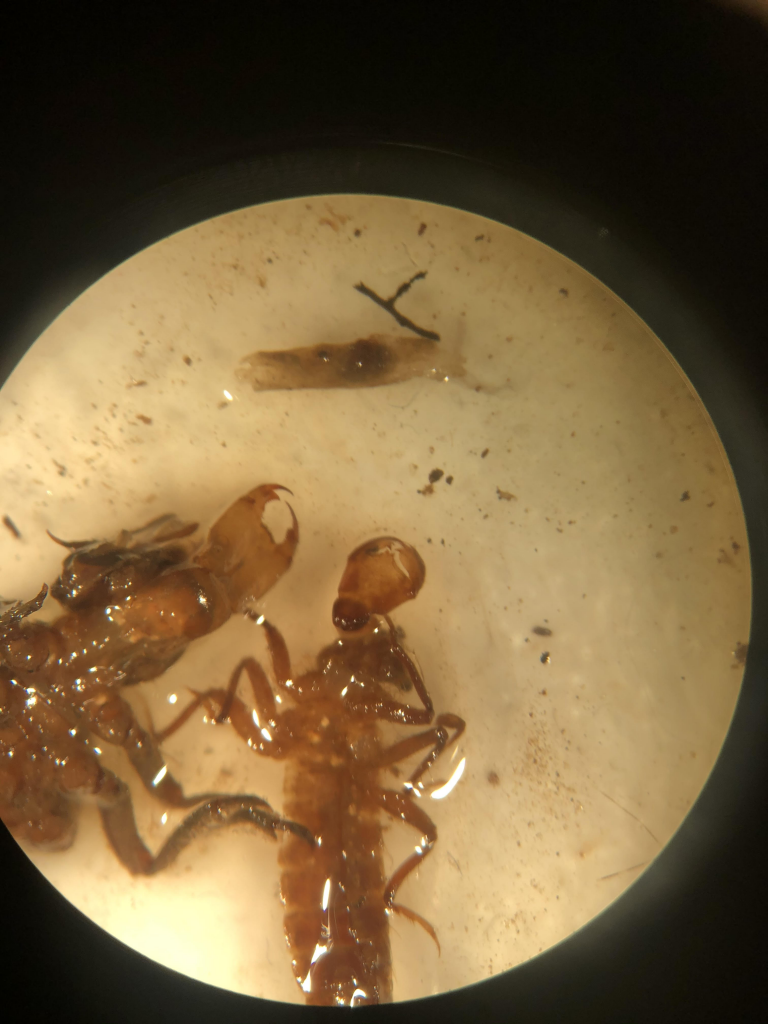
There are over 225 described terrestrial invertebrate species in the Blue Ridge Mountains that, when combined with the Appalachian Mixed Mesophytic Forests, contains the highest total amount of endemic flora and fauna species in North America! I have to be honest though, it feels like there are 225,000,000,000 invertebrate species in these mountains.
I am preparing for our upcoming “Entomology Field Day” later in August where I will be leading a hike on the South Section and discussing insect biodiversity and trapping methods with participants! I am excited to lead this hike and discuss with a new audience! My parents are running out of patience for “hey guys…wanna hear a bug fact??”
August 17th, 2020
Running total of insects identified? Hundreds more!
I’ve been jumping back and forth between my data lately- going from sweep net data to aquatic, to pitfall. I have just completed identifying my aquatic specimens, pitfall traps are halfway done, and sweep nets are done as soon as my organization system goes beyond writing everything down in a random order!
Here are some of my favorite sweep net finds so far!
To the right you can see the wide-footed treehopper (Campylenchia latipes)! These are the only treehoppers on the east coast with a pronotum (the little horn) extending in front of the body instead of behind. Treehoppers have incredibly distinctive communication calls (which they produce by creating vibrations through the plants they rest on), and you can listen to a great variety of them here.
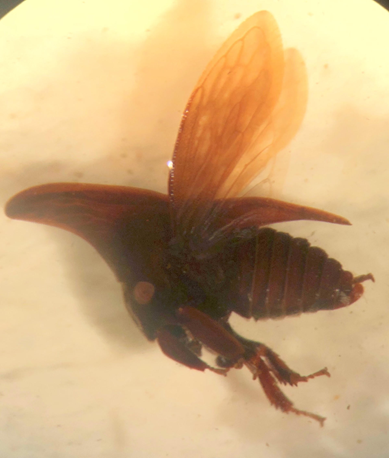
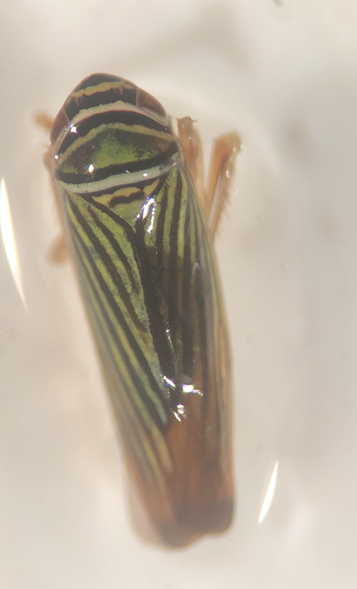
Look at the markings on this beautiful sharpshooter leafhopper! These guys are everywhere on the preserve right now, and even though they’re only about 2-5mm long, you’ll easily be able to distinguish them from other leafhoppers by those groovy markings.
And last but not least- this treehopper (which unfortunately had all the color leeched out of it from my ethanol preservative) strikes a POSE on the microscope dish- he could definitely be in the BeeGees (the TreeGees?? Anyone??).
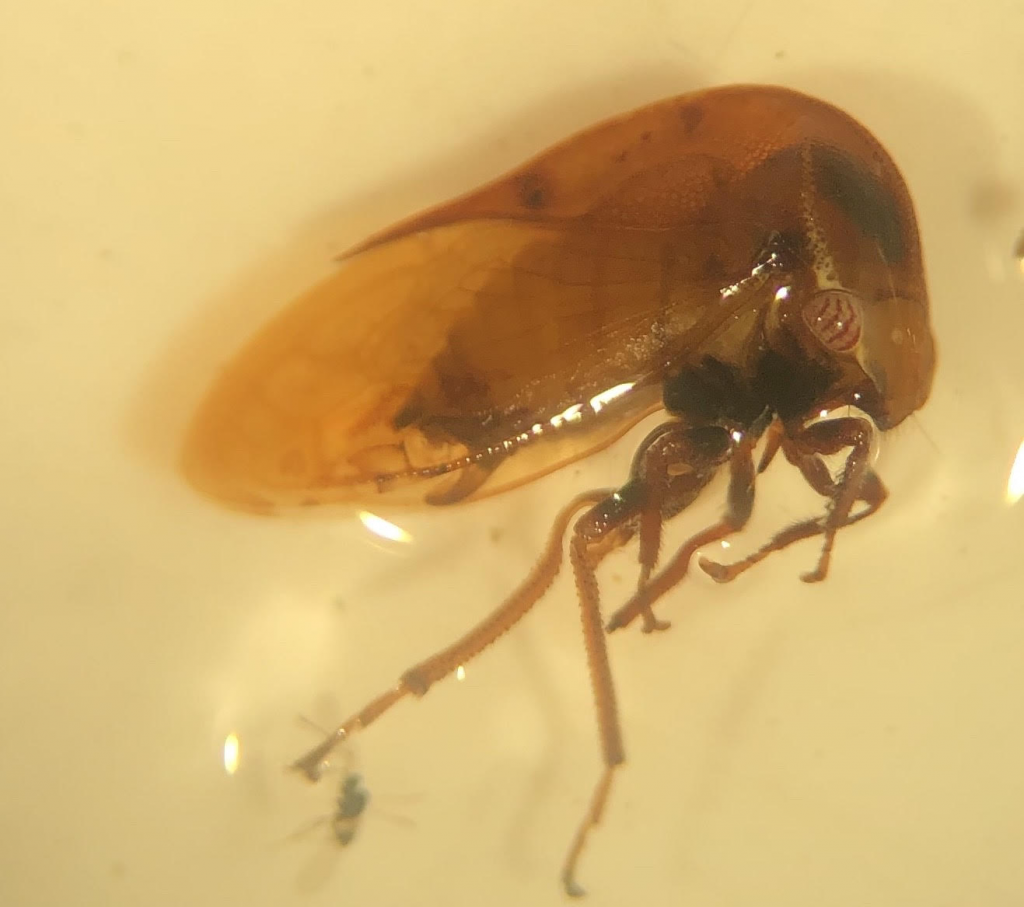
August 23rd 2020
I led a guided Entomology Field Day hike today on the South Section of the Preserve. I had such a great time getting to know some of the wonderful people who volunteer, support, and love The Preserve. We walked around the south section of the preserve, found spiders, beetles, beetle larvae, moths, and a lot of ants! There were some brilliant questions raised on the hike, one of which I would love to answer here, since I’m pretty sure it won’t be common knowledge!
Question: How does an open circulatory system work in insects?
Humans (as an example- all echinoderms and vertebrates have this) have a closed circulatory system- our blood is enclosed in vessels, and is pumped through the heart to different areas of the body, and blood does not fill body cavities.
Insects, on the other hand, have an open circulatory system, meaning that their “blood” (hemolymph, mostly water but containing hemoglobin/carbohydrates/glycerol/amino acids/etc.) flows openly in their bodies, without vessel constriction. It is also directly open to the environment in places like the digestive tract. The open circulatory system is advantageous for insects over a closed system because it uses less energy, so it is suited for animals with smaller and slower bodies. Instead of a heart, insects have a vessel on their dorsal (upper) side which moves the hemolymph around!
This graphic from The Robinson Library illustrates the open circulatory system (and is also a fantastic resource if you wish to learn more about circulatory systems):
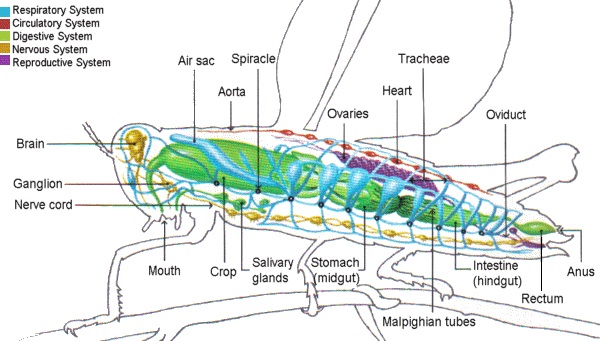
All in all, August was full of identification, analysis, and brain-blasting questions. Stay tuned for the final chapter of my fellowship and some more beautiful photos of insects!
